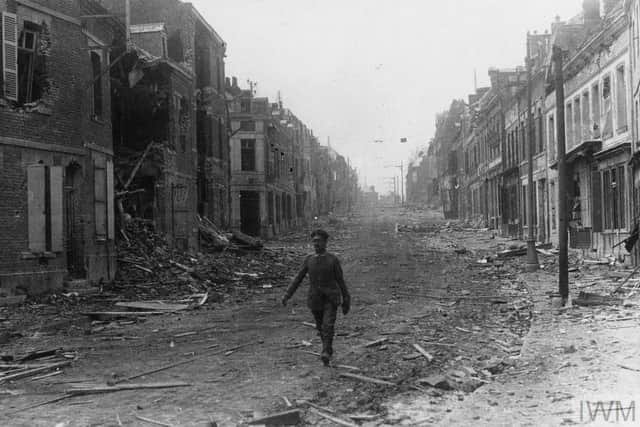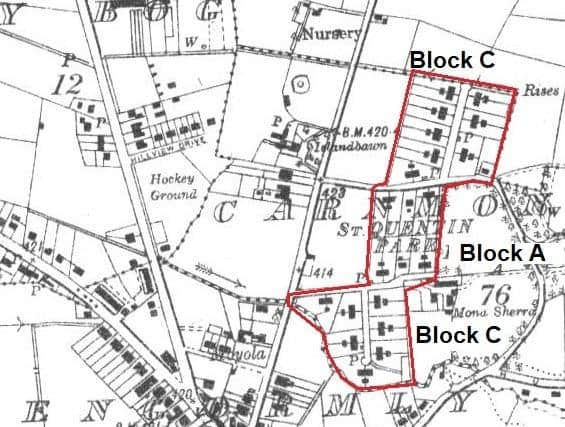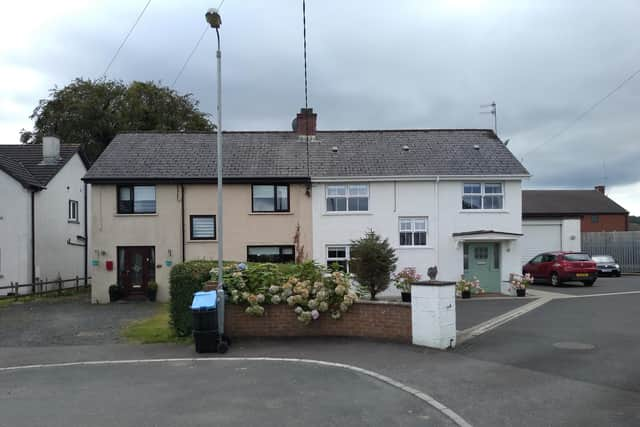Unnoticed homes for heroes with oft forgotten tenants
and live on Freeview channel 276
He mentioned, in passing, the forthcoming centenary of the ex-servicemen’s cottages at St Quentin Park, Glengormley, and invited Roamer on a guided tour last week. (Roamer lives close by but was unaware of the Park’s past, or presence.)
After WWI ended, Parliament passed the Irish Land (Provision for Soldiers and Sailors) Act in 1919, providing for the erection of ex-servicemen dwellings across the island of Ireland.
Advertisement
Hide AdAdvertisement
Hide AdNigel has documented 1,252 veterans’ cottages built in Northern Ireland between 1921 and 1939, with details of some former occupants. A total of 111 dwellings were constructed between 1922 and 1925 around Whiteabbey and Glengormley, with one in Ballyduff and another on the Whitewell Road. Four were built in Whitehouse later in the 1920s.


Known as ‘colonies’, many were named after WWI battlefields, like Whiteabbey’s Cambrai and Ypres Park. Glengormley’s 40 cottages, called St Quentin Park after a famous French battlefield, were built in two phases in 1922 and 1923 on 10.5 acres of land divided into three blocks, A, B and C.
St Quentin’s past is punctuated by war; the Hundred Years' War (1337-1453); the Savoy-Spanish victory over the French (1557); Russian occupation (1814-1815); a deciding battle during the Franco-Prussian War (1871) and four historic battles during WWI, one in 1914 and three in 1918.
The land for Glengormley’s St Quentin Park was purchased from Thomas Alexander Archbold of Hillview and Captain Robert Humphrey Bland of Tobarcooran for £1,503-6-6, around £68,380 today. Archbold’s daughter, Jane Russell Archbold, served with the Voluntary Aid Detachment as a Staff Nurse at the UVF Hospital in Belfast from 1916 to 1919. Captain Bland served with the Royal Irish Rifles and the Labour Corps in WWI.
Advertisement
Hide AdAdvertisement
Hide AdThere were three cottage types in St Quentin Park - 38 semi-detached and two detached. Work commenced in August 1921 and 16 cottages in Block B were completed on 11th May 1923, thus the forthcoming centenary.


The plots averaged one quarter of an acre, adequate for kitchen gardening, and the initial weekly rent was five shillings - around £11 today. There was no separate water supply; four pumps for everyone.
A Street Directory from 1924 cites most of the residents, with Nigel’s research on two of them outlined here: Patrick Joseph Finnison (misspelt ‘Firmison’ in the directory) from Leith, enlisted with the Royal Irish Fusiliers in October 1908 and was deployed to France on 22nd August 1914. Patrick was taken prisoner and held at Limburg and Stendal camps in Germany. He was discharged in January 1919 and was living in Whitehouse when he was awarded a weekly Disablement Pension of 16 shillings - approximately £46 today.
He was employed as a clerk when he married Agnes Canavan, a tailor, on 15th July 1919, in St. Mary's Star of Sea Roman Catholic Church in Whitehouse. After St Quentin Park, the couple moved to Warrenpoint where Patrick died on 28th November 1943, aged 49.
Advertisement
Hide AdAdvertisement
Hide AdAnother resident which Nigel has researched was Isaac Doherty, born on 5th July 1877 at Ballyfinaghy, County Antrim, to Robert Doherty and Anne Doherty (nee McGowan). Isaac married Mary Graham of Drew Street, Belfast, on 5th September 1912 at St Anne's Parish Church. Isaac enlisted with the Royal Inniskilling Fusiliers and was posted to France with the Ulster Division in October 1915.


He was serving with the Royal Engineers when he was transferred to the Class ‘Z’ Army Reserve (discharged soldiers) on 8th May 1919. In 1928, Mary's daughter from her first marriage, Lily Graham, died at the Royal Victoria Hospital aged only 21. Isaac Doherty was living at 909 Crumlin Road, Belfast, when he died on 24th February 1940, aged 63, and Mary Doherty died on 7th May 1957, aged 80. Isaac and Mary Doherty and Lily Graham are buried in Dundonald Cemetery.
Nigel Henderson says: “Whilst many of the cottages have been extended or altered, with some of the semi-detached cottages converted into single dwellings or business premises, it is still possible to see original features. One pair of cottages has been demolished and replaced with Milibern Close, also a housing complex for ex-service personnel. The support for service personnel continues, albeit in a different way.”
And history continues all around us if we know where to look for it.